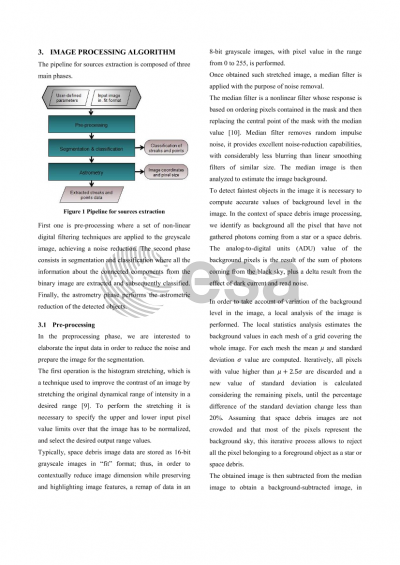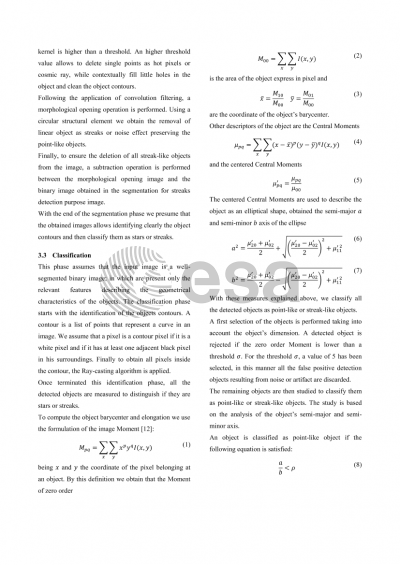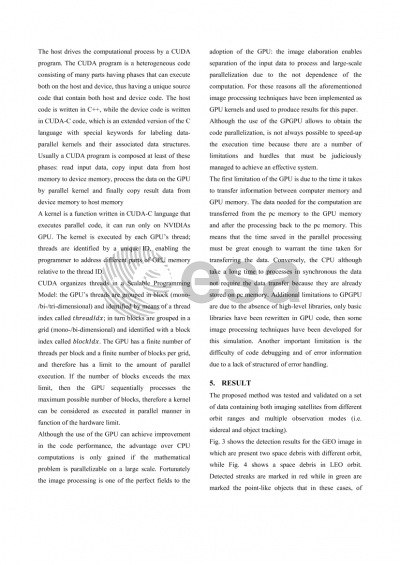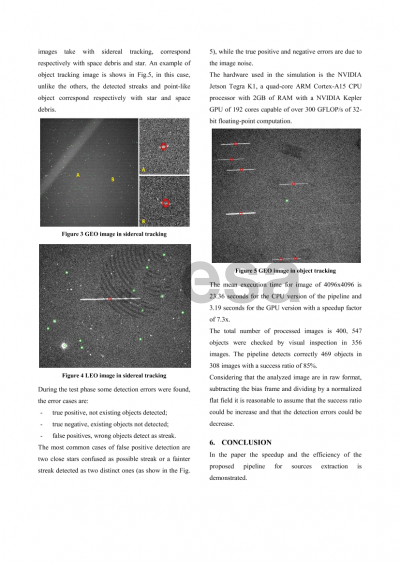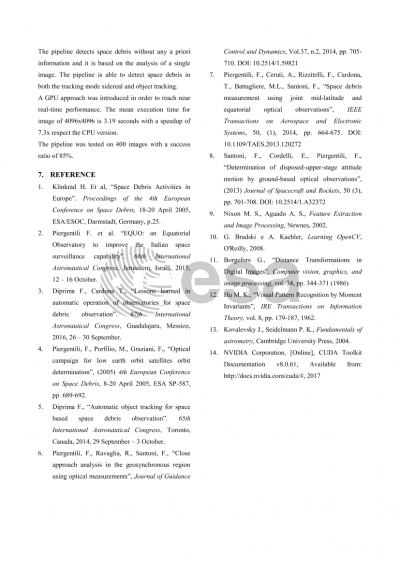Document details

Abstract
The higher awareness of the space debris threat has triggered the need of a distributed monitoring system for the prevention of possible space collisions. The increasing number of dedicated sensors allows for a wide and continuous monitoring of the space environment and then for an accurate knowledge of debris and their orbit determination. Alongside with this trend, the need of automatic data analysis has being enhancing its importance in order to manage the increased images volume and to provide a quick and reliable toolbox (a SW framework) able to identify candidate space debris and support in their analysis. Each possible debris characterization needs in fact an identification phase; orbit and attitude determination and finally the collision risks estimation are the next steps.
This paper presents the implementation of an optimized and performance-oriented pipeline for sources extraction intended to the automatic detection of space debris in optical images. Algorithm reliability has been demonstrated in a prototypal environment, while the overall process automation and efficiency have been the main drivers in its final implementation. The performance advantages obtained with the huge degree of processing parallelism provided by General Purpose computing on Graphics Processing Units (GPGPU) are analyzed and demonstrated here: splitting data analysis over thousands of threads allows for big datasets processing with a limited computational time. This implementation put the basis for the realization of a SW framework, a set of GPU based libraries, fully intended to the efficient analysis of optical images for space debris detection and characterization.
Another key point, enhancing its wider applicability, is that the object detection does not need auxiliary information, neither about the image acquisition (i.e. observed zone and orbital regime of the observed object), neither the star catalogue to perform stars subtraction before detecting streaks. Furthermore it is based on the analysis of a single image, thus the acquisition of consecutive frames of the same field (for stars field subtraction) is neither needed. The algorithm is able to detect both kinds of features can be found in the optical image (streaks and point-like objects), so allowing its adoption in both the observation modes: sidereal tracking in which the star are point-like object and the space debris are streaks and object tracking in which features’ significance is inverted.
The algorithm’s flow itself is composed of three main phases. First one is pre-processing where a set of non-linear digital filtering techniques are applied to the greyscale image, achieving a noise reduction. The second phase consists in segmentation and classification where all the information about the connected components from the binary image are extracted and subsequently classified. Finally, the astrometry phase performs the astrometric reduction of the detected objects.
The implementation has been tested on a large and variate images data set, containing both imaging satellites from different orbit ranges (low, medium and high orbits) and multiple observation modes (i.e. sidereal and object tracking).
Preview

